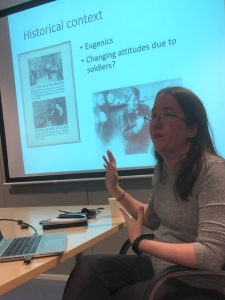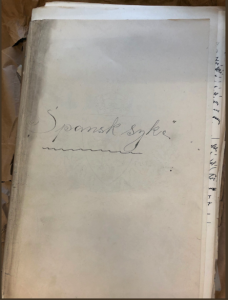New publication!
I am happy to share the first paper of the DIS2 project, recently published by the Scandinavian Journal of Disability Research. The title is “1918 Influenza Outcomes among Institutionalized Norwegian Populations: Implications for Disability-Inclusive Pandemic Preparedness.”
In this paper, my co-author, Svenn-Erik Mamelund, and I describe previous studies that found connections between disability and the flu. We also discuss how many countries do not consider disability enough in their current plans for dealing with pandemics like COVID-19.
We looked at Norwegian institutions during the 1918 flu pandemic, including schools for children with disabilities and psychiatric hospitals. Reports by school directors showed that the children were more affected while the staff seemed to be mostly fine. At the hospitals, staff members were the first to get infected, and a larger percent of them got sick. But a larger percent of the patients who did get sick died.
We end with suggestions for how pandemic plans today can better include disability. Our suggestions include:
- People with disabilities must help create plans and responses to pandemics. This has to take place from the international to the local level.
- People with disabilities who are institutionalized are at high risk during pandemics. Our results support efforts for deinstitutionalization and also demonstrate that existing institutions (including smaller facilities) need good plans and resources for dealing with pandemics.
- Future work is needed on the connection between disability and influenza (or other infectious diseases), looking at both biological/medical and social variables as well as how they interact.
Read the full article here: http://doi.org/10.16993/sjdr.725
This paper is particularly timely due to the current COVID-19 situation. For just one example of how organizations run by people with disabilities and their families are responding, check out the resources provided by the European Disability Forum: http://edf-feph.org/covid19

